Memo From Frank
In October 1947, U.S. Air Force Captain Chuck Yeager became the first man to break the sound barrier. It’s not as easy as it sounds. The problem was that the plane would start shaking violently as the sound barrier was approached, as if the aircraft would disintegrate. So Yeager had two choices. He could either give up, or get outside of his comfort zone and hit the throttle. In so doing, he brought about the supersonic era in aircraft, where speeds now exceed 2,500 miles per hour. But it started with a young pilot willing to take some risk. And that’s how many billboard portfolios began, with somebody trying something new and accepting that things might not work out initially but it was worth the effort and success would ultimately prevail.
Is There A Solution Here?
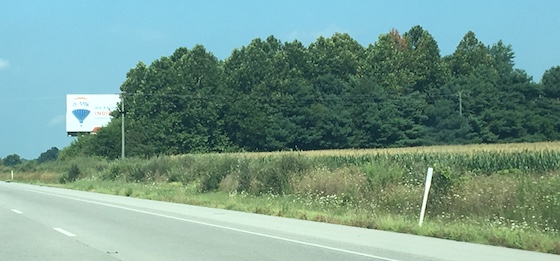
There is no greater threat to any sign than having its visibility blocked. If the viewer cannot see the sign, then what’s the point of advertising on it? So whenever you are placed in a situation where a sign you want to build or buy is jeopardized by blockage of some type, there is a methodology of steps you should take to see if there’s a solution to the situation.
Can the obstruction be removed?
Sometimes the easiest solution is to simply remove the obstruction. Some obstructions you can legally remove without permission from anyone but the landowner, such as a tree growing in front of the sign that is located on the same property. The most common blockage removal is simply trimming the trees that are located surrounding the sign, which is typically provided under the billboard ground lease. However, often the offending item is located on property that is not owned by the same owner where the sign is located. In these cases, your best course of action is to inquire if it would be O.K. to remove the obstruction and, if not, if you could pay them money to do so. Sometimes you can gain permission with a cash payment of $1,000 or so. In some cases, the neighbor will need to sign a “vegetation” agreement, giving you the right to trim the problem trees continually in exchange for a monthly or annual payment. But what about those cases where the obstruction is located on city or state right-of-way? That’s a particularly difficult situation, as there is nothing more frustrating than trying to work with a slow-moving bureaucratic organization. Nevertheless, you should give it a shot and see where it goes. We once had a sign that had bad tree blockage that was 100% located on state right-of-way. We talked to the state but it went nowhere. Then one of our employees saw state employees trimming back vegetation from power lines right around the sign, and asked them if they could cut back the trees near the sign. Within ten minutes, the trees were completely gone, and what we’d spent months trying to get accomplished – to no avail – had been remedied.
A word of warning: never even think about cutting down objects when you do not have permission
No matter how your negotiations go, don’t even think about taking matters into your own hands and getting out your chainsaw. If you cut down a tree – or even trim one – without permission, it might be construed as a felony. While such cases are typically settled before going to court, the fine for a single tree can be $10,000. And don’t assume that nobody will know it was you. There is nobody else that would have any motive to do tree removal than the sign owner.
Can the sign structure be raised?
Another option that has saved the day in some cases is to raise the sign structure – and ad face – into the air. If the permit allows it, this can be a permanent fix and a game changer. However, be advised that such work will result in costly enhancements to your foundation and column, as the stress of more height could result in the sign collapsing in a wind storm unless the sign gains more support. In the case of wooden signs, the standard procedure to raise the 2” x 4” stringers and the entire face. In the case of wooden signs, it may be that the poles and foundation are already sufficient – you’ll need to get some guidance on that from the wooden sign builder. In some cases, the sign can be strengthened by attaching steel cables that are grounded from both sides of the sign.
Can you increase the “V”?
In severe blockage situations, you may be able to make the ad face marketable by adding a substantial “V”, which changes the angles of view to the customers. However, bear in mind that large “V”s are very expensive, so you have to make sure that the sign justifies that cost. At their most severe, the “V” can take the ad face to nearly parallel to the highway.
Do you have enough read time to make the ad space marketable?
Let’s define at what point you even need to worry about sign blockage. The standard distance of visibility on a highway billboard is 400’. That gives the viewer a few seconds to read the message at a point where the words are large enough to be read. You do not need a mile of visibility for the sign to be a winner – you can’t even read the message at that distance. However, it’s great when you can see a sign from a long distance, as it builds curiosity of what it says. But that type of length of read should be reserved for the best signs, not just the average.
Conclusion
Visibility is one of the most common problems for some signs. When this happens, don’t panic. See if there’s a way to amiably resolve the situation to everyone’s satisfaction. Follow these steps to help guide you to success in solving the problem.
The Ultimate Billboard Boot Camp
![]() How to Find a Billboard Location
How to Find a Billboard Location
![]() How to Buy a Billboard
How to Buy a Billboard
![]() How to Build a Billboard
How to Build a Billboard
![]() How to Operate a Billboard
How to Operate a Billboard
![]() How to Rent Ad Space on a Billboard
How to Rent Ad Space on a Billboard
![]() How to Sell a Billboard
How to Sell a Billboard
Get Your Copy Now!
Not Your Every Day Billboard Sign – But Maybe That’s Unfortunate
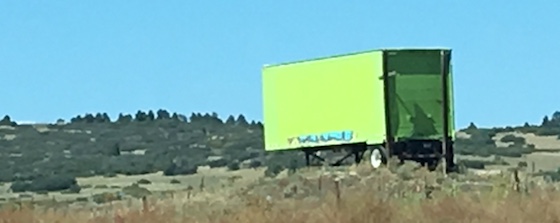
I passed this sign on the interstate in Colorado recently. It’s the trailer from an 18-wheeler which has been parked perpendicular to the road and turned into a billboard. While this is against many sign ordinances and probably not what trailers were designed for, it may be an example of supreme ingenuity on the part of the owner, as you can buy an old, broken 18-wheeler trailer for $1,000, whereas a conventional sign structure might cost twenty times that amount. Often times, financial necessity yields some creative ideas, like the old saying “necessity is the mother of invention”. In this case, someone has found a way to take a $1,000 investment and make it into probably $6,000 per year in profit. And, in my book, that’s a pretty smart idea.
How To Get Permission To Build Billboards In Locations They Are Currently Not Allowed
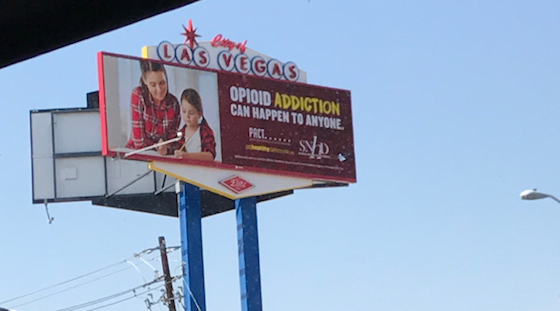
One of the best ways to create massive wealth with a sign is to achieve what most people think is impossible: to get the permit to build a sign in an area in which signs are banned. These projects create massive value as, with the laws of economics, having the only sign creates a monopoly and the demand far exceeds the supply. So how do you do it?
What is a variance?
The way to build a sign where no signs are allowed is to obtain what is called a “variance” – effectively permission to do something that is not normally allowed under the law. This simple document gives you the right to build a sign where nobody has ever had permission before. It’s a very powerful instrument that typically is obtained through the city’s planning and zoning department after approval from the city council.
How do you get one?
Technically, you have to go before the planning and zoning commission, as well as the city council, and obtain a motion to approve and a majority vote. While this is great in theory, the truth is that you have to do a huge amount of political work behind the scenes to accomplish this. The best method is to contact each member of the city council and find out what they think would need to happen in order to vote for your variance. Obviously, I’m not talking about offering a cash bribe. But some council members will vote for the variance if you offer certain trade-offs with city benefits – which is a standard part of negotiation.
The power of ego
Many city officials have a penchant for wanting to promote their municipality. They like the idea of the P.R. of having their name on the highway. As you can see in the photo at the top of this article, it was this desire on the part of the City of Las Vegas to allow that billboard to go up. Sometimes the city wants to have a panel on the billboard for their own promotion, and at other times they want to have their own complete sign to be built in coordination with the sign.
Appealing to business interests
One argument that I have used in the past to get a variance is that the existence of billboards would allow local businesses to advertise their products and services and to exit customers off the highway to come into town. The result would be a more vibrant city center and more sales tax. This is very compelling to many small town governments.
Having the land owner work the council behind the scenes
Of course, one avenue of attack is to simply let the property owner work the city council behind the scenes, using his own personal relationships and power. I had this happen in a variance case south of Dallas. The property owner was the most influential business owner in town and, despite the citizens showing up at the council to talk against the variance, they could not match the force of the property owner who was hugely well connected and well-known by the council members that voted.
Conclusion
Obtaining a variance to build a billboard in a restricted area is a great way to make money. The simple act of getting this important permission creates huge monetary value. Follow this suggestions to have your best chance at success.
In Awe Of The “Super V”
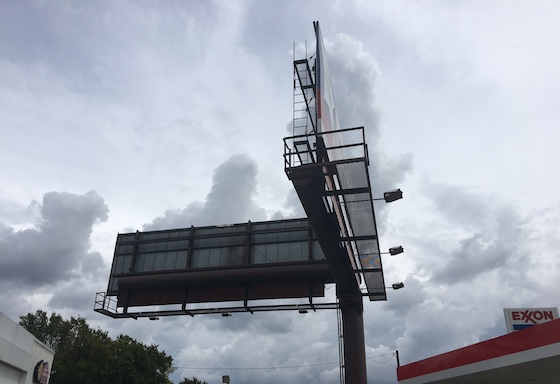
There’s no greater engineering feat than the billboard that has a “super V”, where the separation of the ad panels at the rear of the sign is greater than the total length of the ad. A “super V”, such as the one in this photo, can double the cost of the sign, and presents huge engineering challenges to support the massive force on the components due to both weight and wind load. The only thing harder to engineer is the “super flag/super V” in which the sign column goes up and then goes out an extreme distance, with the sign face attached at the end. You only see these type of configurations in large urban markets, where the ad space rents for enough money to justify the cost of construction.
What’s The Next Big Idea?
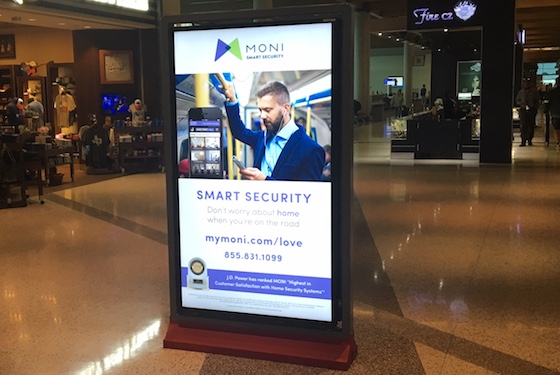
A few decades ago, there were no ads in shopping malls. Then somebody had the bright idea to build triangular mall directories, with one side devoted to paid advertising. Then additional ads popped up in the surrounding corridors and a new medium of advertising was invented. The out-of-home advertising sector includes more than just billboards, but the basic business model is identical. So where else could outdoor advertising go?
Where are there lots of people?
The first question is: where are there lots of people to reach with ad messages? It could be a sporting event, an auditorium, a parking garage, a hot pedestrian site. Any place that people gather is a potential opportunity, as advertisers want to reach the largest number of potential customer possible.
How can you deliver the ad message?
Is the ad message going to be a static display (one that does not move) or one that features multiple advertisers that change every few seconds? How big will it be? How many ads ca you create in the space? Will they be lighted or non-lighted? These are all questions that you need to know the answer to.
Running the numbers to check feasibility
Once you have created the basic business concept in your mind, you need to put that on paper and see what the actual potential is financially. Model the revenue and expenses and see how much money the concept can produce. Look at the best, worst and realistic case scenarios. Make sure that the idea is worthy of your time and capital to get it off the ground.
Building a prototype
Up to bat next is to create the prototype – the real-life model that demonstrates its effectiveness. To do this, you’ll have to enter into a written agreement with the owner of the venue to allow you to install and rent the ads. Remember to remain flexible when building the prototype. You may have to make concessions and alterations as you convert theory into reality.
Expanding the concept
Once you have launched and perfected the model – and tested its effectiveness and profitability – it’s time to expand the program exponentially. I cannot emphasize enough that a successful prototype invites copycat competition, so the faster you can expand, the better. The good news is that outdoor advertising like this is not capital intensive. Go as full throttle as you can, to strike before the competition does.
Conclusion
There are tons of great opportunities out there for out-of-home programs. Learn the basics and then apply them to what you see in the marketplace. This could be your big opportunity to start an industry.
There’s Potentially Something Wrong With This Picture
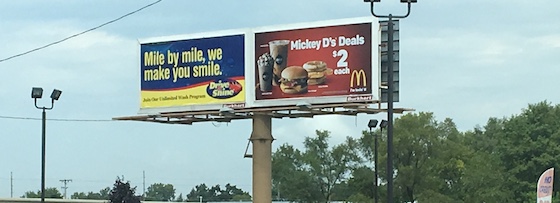
This sign has been raised higher in the air at some point. How do I know? Do you see the metal plate about 5’ below the plate at the top that holds the torsion bar and ads on? My guess is that the sign was too short to clear some obstruction, and the sign company elected to raise it higher in the air to get above the blockage. If you buy a sign that looks like this, you need to know that the engineering was done to make sure that the sign is safe to function with its extra height. You also need to make sure that the sign does not violate the height requirements under the permit.
The Dangers Of Short Signs
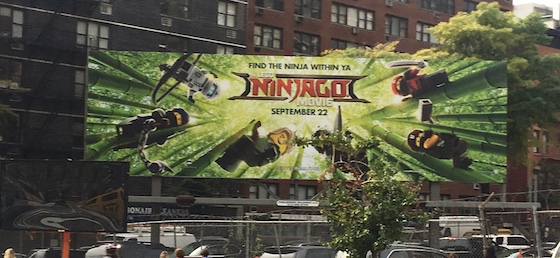
While billboards can be too tall, they can also be too short. Even though this sign has not obstructions due to its low altitude, the bigger problem is that it’s located in an urban area and, as a result, subject to graffiti. There are many signs out there – take Los Angeles, for example – where signs that are low to the ground are rendered useless as result of individuals that love to torment such items with gang graffiti. They like to install their own ads with spray paint over the top of the actual paid advertiser’s copy. Although you can sometimes fix these situations with barbed wire, many times the graffiti artist is too clever to let this stop them, and the sign becomes impossible to use and make money with. That’s why you see so many short, abandoned signs in some urban areas. Can you bring them back to life? Potentially, if the neighborhood has changed for the better, or you have a creative way to stop access.
The Market Report
Prices Are Delayed By At Least 15 Minutes
